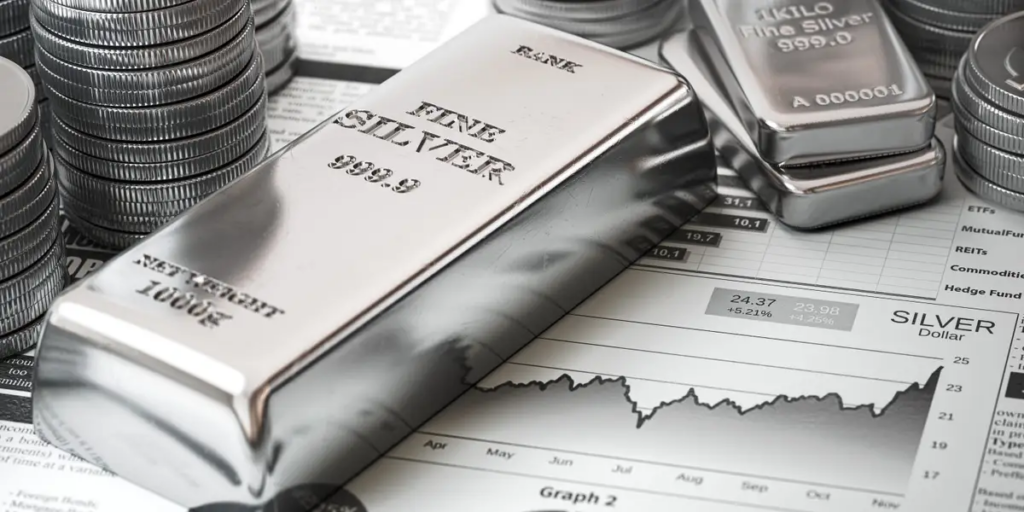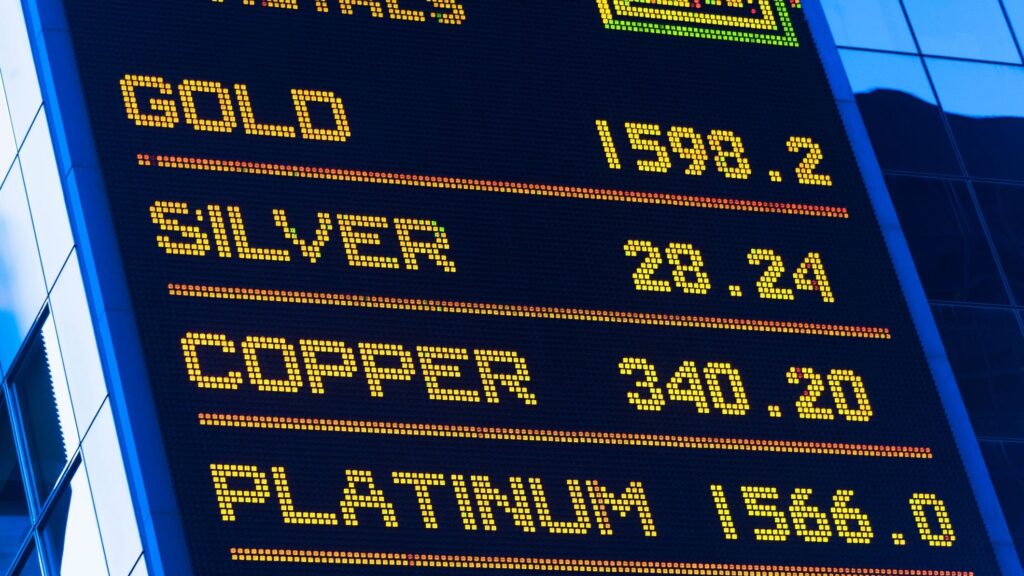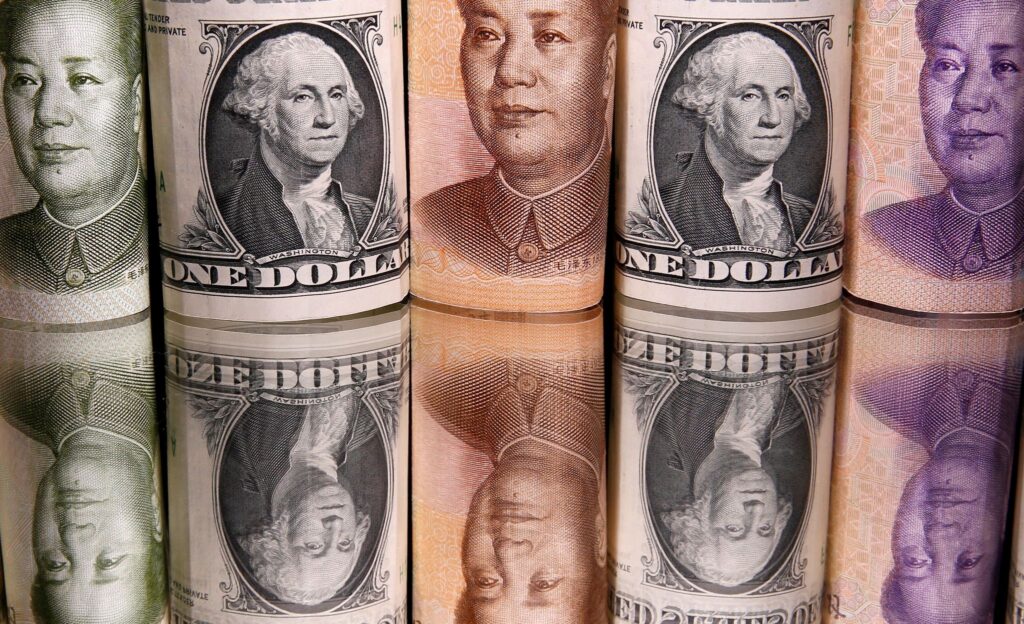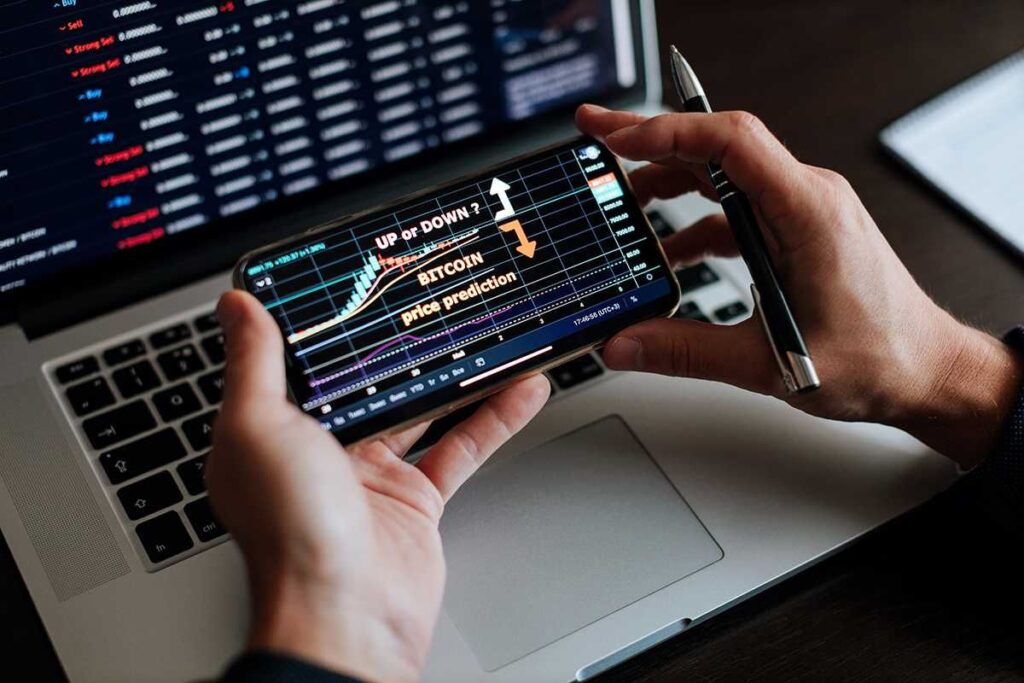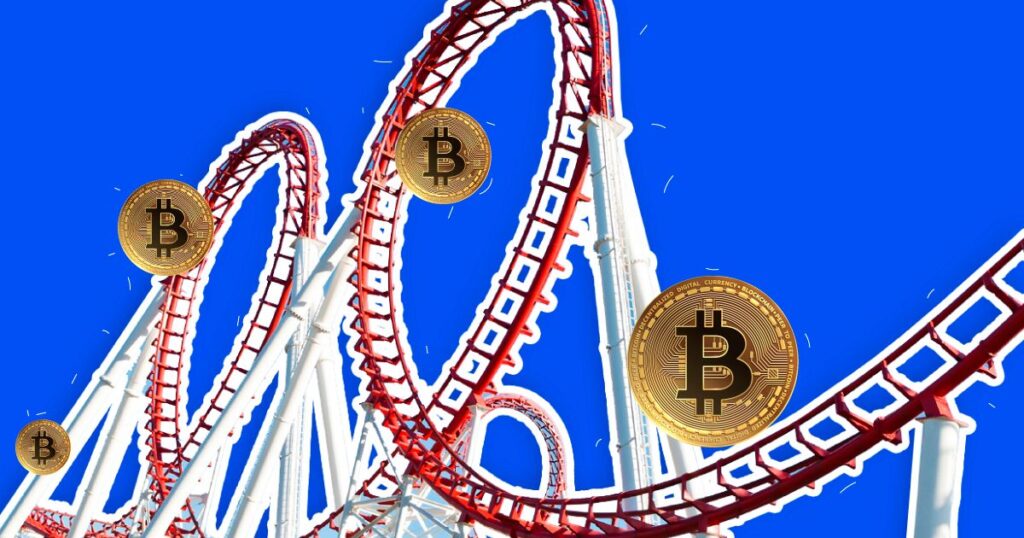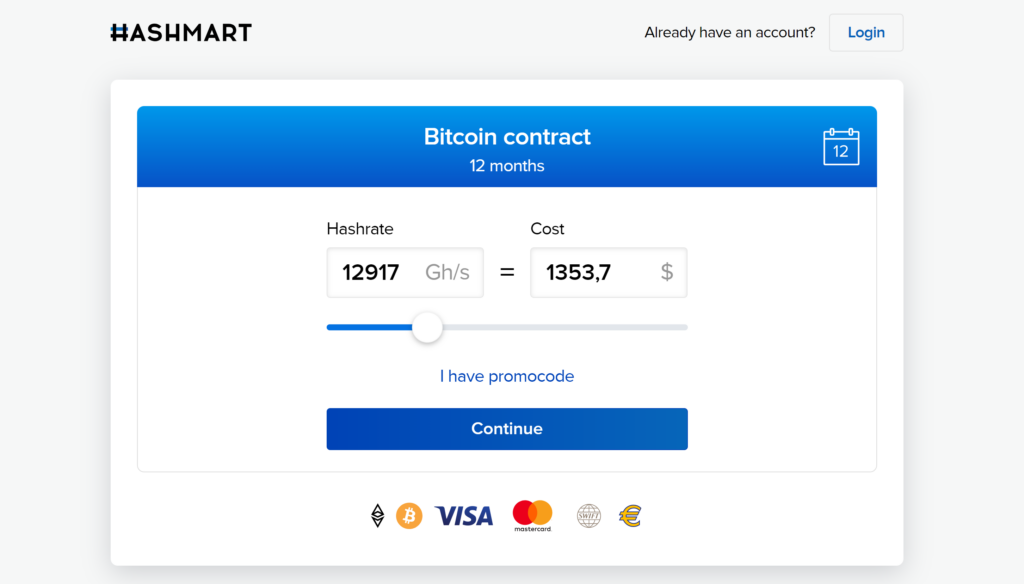Primary investment trends in 2022

Smart investments are essential for most people to ensure a livable future and financial stability. As the coronavirus pandemic has shown, a seemingly stable economy can quickly turn on its head, leaving nothing to those who were hardly prepared for difficult times. Now the global economy is going through a period of high inflation, geopolitical instability, and general uncertainty about the short-term prospects of very many areas. In such conditions, the investor needs to diversify his portfolio as much as possible. Today we will highlight several areas where to invest money with minimal risk.
Precious metals
Gold and silver were recognized as precious metals and were highly valued thousands of years ago. These days, precious metals still have their place in the savvy investor’s portfolio. But which of these assets is best suited for specific investment purposes? There are many ways to buy precious metals, such as gold, silver, and platinum; there are many good reasons to diversify your portfolio into them. Let’s start with a description of the most popular precious metals.
Gold
Gold is unique in its durability (it does not deteriorate when stored for a long time), malleability, and ability to conduct heat and electricity. The metal has found industrial uses in dentistry and electronics, but most know it mainly as a basis for jewelry and as a form of currency.
The price of gold is determined by the market 24/7. Gold trades primarily as a sentiment function – the laws of supply and demand less influence its price. This is because the supply of new deposits significantly exceeds the amount of gold stored in the earth’s bowels. When treasure hunters want to sell gold, the price drops. When they want to buy, the new supply is quickly absorbed, and the cost of gold rises.
These are the reasons why gold is so popular among different classes of investors:
- Systemic financial problems. When banks and money are perceived as unstable and/or political stability, in general, is in doubt, gold is often seen as a safe store of wealth;
- Inflation. When actual rates of return in the stock, bond, or real estate markets are negative, people regularly turn to gold as an asset that will maintain its value;
- War or political crises. Conflicts and political upheavals have always encouraged people to accumulate gold;
One of the negative aspects of investing in gold (and most precious metals in general) is its very low volatility. A noticeable movement in the price of gold can stretch for years, so the asset is unsuitable for those who expect to make a profit quickly.
Silver
Unlike gold, silver prices are more subject to fluctuations based on the demand for the metal as a raw material in the industry. For this reason, fluctuations in the price of silver in the market are more volatile than gold. Although silver trades at roughly the same rate as gold as an item to be stored, the supply and demand equation for this metal in the industry strongly affects its price. This equation has always fluctuated with innovations in the industry.
For example:
- The once dominant role of silver in the photographic industry (silver-based film) has been superseded by the advent of the digital camera;
- At one time, the expansion of the middle class in the emerging market economies of the East created an explosive demand for electrical appliances, medical products, and other industrial products that require silver to produce;
- Silver is widely used in batteries, superconductors, and the microchip market.
The bottom line is that the price of silver is affected by its uses, not just in the fashion world or as a store of value. Of the latest innovations that can become a trigger for a new wave of growth of precious metal, the mass popularization of electric vehicles should be highlighted. Silver is an essential element in the electronic “stuffing” of electric cars.
Platinum
Like gold and silver, platinum is traded around the clock on global commodity markets. During regular market and political stability periods, its price (per troy ounce) is often higher than gold, simply because it is so rarer. Much less of this metal is extracted from the earth every year.
Other factors also determine the price of platinum:
- Like silver, platinum is considered an industrial metal. The most significant demand for platinum is for automotive catalysts, which reduce the harmfulness of exhaust gases. After that, most of the need is for jewelry. The rest comes from catalysts in the oil refining and chemical industries, as well as computer components;
- The price of platinum also depends on the geopolitical conditions in the countries where the metal is mined;
- The mining sector is relatively centralized – platinum mines are largely concentrated in only two countries: South Africa and Russia.
Investment Scheme
Let’s take a look at the options available to those looking to invest in precious metals:
- Exchange Traded Funds (ETFs). ETFs are a convenient and liquid way to buy and sell gold, silver, or platinum. However, investing in an ETF does not give you access to the physical commodity, so you are not eligible to claim the metal in the fund. You will not receive an actual delivery of the gold bar or silver coin;
- Stocks and shares. Shares of companies that extract precious metals are tied to changes in the prices of these metals. If you don’t know how the price of their securities is formed, it may be wiser to stick to investing in funds with managers with a solid track record;
- Futures and options. The futures and options markets offer liquidity and leverage for investors who want to bet heavily on metals. The most significant potential profits and losses can be obtained when using derivative products;
- Ingots. Coins and bars are suitable for those who have somewhere to put them, for example, in a safe or a safe deposit box. Of course, for those who expect a significant crisis, bullion is the only option, but for investors with a time horizon, bullion is illiquid and simply inconvenient to hold;
- Certificates. Certificates offer investors all the benefits of owning physical gold without the hassle of transportation and storage. However, if you’re looking for real-life disaster insurance, certificates are just paper. Don’t expect anyone to accept them in exchange for something of value.
The best way to invest in precious metals is to buy the metal outright and hold it in physical form or to buy ETFs that are highly associated with precious metals or companies in the field. Please note that precious metals alone do not provide any additional inflow of funds, so the investor will not receive any income other than the fluctuation in the asset price.
Currency basket
A currency basket is a set of several currencies with different weights. It is often used to establish the market value of another currency, a practice known as currency pegging. Forex traders can also enter basket orders to trade multiple currency pairs simultaneously. A currency basket may also be called a “currency cocktail.”
A country’s monetary authority, such as a central bank, may use a basket of currencies as a benchmark to set its exchange rate, for example, in the case of a currency peg. The authorities can reduce exchange rate fluctuations by using a basket of foreign currencies instead of pegging to a single currency.
In addition, a currency basket is used in contracts to avoid (or minimize) the risk of currency fluctuations. The European currency unit (which has been replaced by the euro) and the Asian currency unit are examples of currency baskets. However, the US dollar index (USDX) is the most well-known currency basket.
The US dollar index was created in 1973 and today is a basket of six currencies – the euro, the Japanese yen, the British pound, the Canadian dollar, the Swedish krona, and the Swiss franc. The euro is the index’s most significant component, accounting for nearly 58% (officially 57.6%) of the basket. The weights of other currencies in the index are as follows: Japanese yen (13.6%), pound sterling (11.9%), Canadian dollar (9.1%), Swedish krona (4.2%), Swiss franc (3.6%).
Regardless of the currency basket, the currency components are selected according to the basket’s purpose. Investors who seek to limit currency risks can choose stable and liquid currencies. On the other hand, investors looking to build a more personalized portfolio can choose currencies according to those most related to their home currency.
Securities
The term “security” refers to a fungible, negotiable financial instrument with a specified monetary value. It represents the owner’s position in a publicly traded corporation through shares; a creditor’s relationship with a government agency or corporation, represented by holding a bond of that organization; or ownership rights represented by an option.
How are securities traded?
Publicly traded securities are listed on stock exchanges, where issuers can seek to list securities and attract investors, providing a liquid and regulated market for trading. In recent years, informal electronic trading systems have increased, and securities are often traded “over the counter” or directly between investors online or over the phone.
An initial public offering (IPO) represents the first significant sale of a company’s equity securities to the general public. After the IPO, any newly issued shares that are still traded in the primary market are referred to as secondary offerings. Alternatively, securities may be offered privately to a limited and qualified group of persons in what is known as a private placement—an essential distinction from company law and securities regulation perspective. Sometimes companies sell shares in a combination of public and private offerings.
In the secondary market, securities are transferred as assets from one investor to another: shareholders can sell their stakes to other investors for cash and/or capital gains. Thus, the secondary market complements the primary one. The secondary market is less liquid for privately placed securities because they are not publicly traded and can only be transferred between qualified investors.
The organization that creates securities for sale is called the issuer, and those who buy them are called investors. In general, securities are an investment and a means by which municipalities, companies, and other commercial enterprises can raise new capital. Companies can make a lot of money when they go public by selling shares in an initial public offering.
How to make money on stocks?
There are two main ways to make money on stocks:
- Dividends. When public companies make a profit, they can distribute a portion of that income to shareholders by paying dividends. You can either receive cash dividends or reinvest them to buy additional shares in the company;
- Capital gain. Stocks are constantly bought and sold during each trading day, and their prices change. When the price of a stock rises above what you paid to buy it, you can sell your shares for a profit.
Both dividends and capital gains depend on the state of the company: dividends depend on the company’s earnings, while capital gains depend on investor demand for shares. Demand usually reflects the future performance of the company. High demand results from many investors wanting to buy a particular stock—which generally drives up the stock price. On the other hand, if the company does not make a profit or investors sell rather than buy its shares, your shares may be worth less than what you paid.
The performance of individual stocks is also influenced by what happens in the stock market as a whole, which depends on the economy in the country or globally. For example, if interest rates are rising and you think you can make more money from bonds than from stocks, you can sell stocks and use that money to buy bonds. If many investors feel the same way, the stock market as a whole is likely to drop in value, which could affect the value of the investments you own. Other factors, such as political uncertainty at home or abroad, energy or weather issues, or soaring corporate profits, also affect market performance.
However, at some point, stock prices will be low enough to attract investors again. If you and others start buying, stock prices tend to rise, offering a profit opportunity. This expectation could “breathe new life” into the stock market. This cyclical pattern repeats itself constantly, although it cannot be predicted with very high accuracy.
At the same time that the stock market is experiencing ups and downs, the bond market is also fluctuating. This is why asset allocation, or including different types of investments in your portfolio, is such an important strategy. In many cases, the bond market rises when the stock market falls, and vice versa. Your goal as an investor is to invest in more than one investment category simultaneously so that some of your money is in the category that performs well at any given time.
Cryptocurrencies
First of all, if you want to invest in cryptocurrencies, you need to get all your finances in order. This means having some capital in case of force majeure, low debt (preferably none), and, ideally, a diversified portfolio of investments in other markets. Your crypto investments can become another part of the portfolio that will help increase your overall profit. Cryptocurrencies are a relatively new phenomenon, so it requires careful study by the investor in each of its aspects.
Decide what you are investing in
As with any investment, understand what you are investing in. If you are buying shares, it is essential to read the terms and conditions of the issue and analyze the companies carefully. The same should be done with any cryptocurrencies since thousands of them all function differently, and new ones are created every day. You must understand the investment rationale for each trade.
In the case of many cryptocurrencies, they are not backed by anything at all – neither “hard” assets nor cash flows. This applies, for example, to Bitcoin – in its case, investors rely solely on the fact that someone will pay more for the asset than they do. In other words, unlike stocks, where a company can increase its profits and thus bring you income, many crypto assets depend on the expectation that the market will become more optimistic and bullish.
Don’t stick to the past
The mistake that many new investors make is that they look at the past and extrapolate it into the future. Yes, Bitcoin was worth a few cents, but now it’s worth a lot more. However, the main question is: “Will this growth continue in the future, even if it is not so rapid?”
Investors look to the future, not what the asset has done in the past. What will determine future returns? For traders who buy cryptocurrency today, tomorrow’s profit is essential, not yesterday’s.
Watch out for volatility
Cryptocurrency prices are as volatile as can be. They can drop quickly in a matter of seconds based on mere rumors that end up being groundless. This can be useful for sophisticated investors who can quickly make deals or understand market fundamentals, trends, and possible directions. For new investors who don’t have the skills or powerful algorithms that drive these trades, it’s a minefield.
Volatility is a game for experienced traders trying to outrun other investors with significant funds. A new investor can be easily overwhelmed by volatility. That is why it is precarious to open transactions in crypto with leverage (that is, under borrowed funds). The market is changing too fast, and if you do not have a clear understanding of its dynamics, priority should be given to trying to reduce potential losses.
Manage your risks
If you are trading any asset, you need to manage risk, especially for volatile assets such as cryptocurrencies. Therefore, a beginner trader needs to understand how best to manage risk and develop a process that will help you reduce losses. And this process can vary from person to person:
- Risk management for the long-term investor may be never to sell, no matter the price. The long-term plan allows the investor to hold the position;
- However, risk management for the short-term trader can be about setting strict rules about when to sell, such as when an investment is down 10 percent. The trader then strictly follows this rule so that a relatively small drop does not become a crushing loss.
Beginning traders should consider allocating a certain amount of funds to an account and then using only a fraction of it initially. If the position goes against them, they will still have money in reserve that they can use later. The ultimate point is that you cannot trade if you don’t have money. Therefore, keeping some cash in the budget will always have a bankroll to fund your trade. It is essential to manage risk in trades, but you will have to pay for this by strict control of your own emotions. Sometimes it hurts to sell a losing position, but it can help you avoid more considerable losses later.
Don’t invest more than you can afford to lose
It is also important not to invest the money you need in speculative assets. If you can’t afford to lose them all, then you shouldn’t be investing in any of the markets, not just crypto; whether it is a deposit on a house or a necessary upcoming purchase, the money you’ll need over the next few years should be kept in secure accounts.
Finally, don’t forget about the security of any exchange or broker you use. You can legally own assets, but someone still has to secure them, and that security must be reliable. If you think your cryptocurrency is not adequately protected, it is worth transferring it to a cold wallet, where it will be protected from hacker attacks.
NFT
What is NFT? Unique tokens (NFTs) are assets on the blockchain with special identification codes and metadata that distinguish them from each other. Unlike cryptocurrencies, they cannot be traded or exchanged for an equivalent. In this, they differ from fungible tokens, which are identical and, therefore, can serve as a vehicle for commercial transactions.
NFT tokens are an extension of the concept of cryptocurrencies. Modern financial systems consist of complex trading and credit systems for various types of assets, from real estate to loan agreements and works of art. By enabling the digital representation of physical assets, NFTs are a step forward in rethinking this infrastructure. Of course, the digital model of physical assets is not new, nor is the use of unique identification of an object or person in the digital space. However, thanks to the blockchain and smart contracts, real “uniqueness” can be achieved.
The most apparent advantage of NFT is the increased efficiency of almost any market. Transforming a physical asset into a digital one simplifies trading and even allows you to completely eliminate intermediaries in a transaction. NFTs representing digital or physical works of art on the blockchain eliminate agents’ needs and enable content creators to interact directly with their audience.
Unique tokens are also great for identity management. For example, a person’s physical passport can be associated with an NFT, and the token can be integrated into identification systems. This way, you can significantly simplify the process of crossing the borders of different jurisdictions. Moreover, expensive unique tokens can in themselves become a brand of an individual, that is, proof of his great fortune.
How to make money on NFTs?
Earnings on unique tokens can be divided into several conditional categories:
- Create and sell your own NFTs. If you are a creative person and know how to create unique content, whether it be drawings, music, videos, or even memes, all this can be monetized by selling content in the form of NFTs;
- NFT trading. Register on a popular trading platform (such as OpenSea) and resell unique tokens. However, there are also disadvantages here – transactions with NFTs are highly dependent on the general dynamics of the crypto market, which, unfortunately, is now very negative;
- NFT gaming. Blockchain-based games allow you to purchase in-game items in the form of NFTs, exchange them, and sell them for other tokens;
- Investments in NFT startups. The last way to make money on unique tokens is to invest in related startups. If NFTs have proven anything, it is that they are not a short-term trend in crypto. They have many uses across industries that could change the world.
Staking
Staking is a crucial element of cryptocurrencies that operate based on the Proof-of-Stake (PoS) algorithm. In PoS-based projects, crypto investors can validate transactions on the network and add them to the blockchain by assuming the role of a validator. An investor must allocate a specific part of the coins for blocking in a particular smart contract to become a validator. This process is called staking. Thanks to it, all network members are sure that the validators will faithfully fulfill their duties. Otherwise, the volume of cryptocurrencies blocked by them will be confiscated.
Even those who do not have enough funds to become a validator can put their coins in the pool and get rewarded. For example, to get the role of a validator in the Ethereum network after the project transitions to Proof-of-Stake, you need 32 ETH or about $48,000 at the current cryptocurrency exchange rate. If you can’t afford such a significant investment, you can always use the Hashmart staking pool. The scheme is straightforward – you invest coins in a pool and then make a profit according to the conditions of the network. This is what Ethereum staking is.
Many long-term holders of cryptocurrencies see staking as a way to make their digital assets work for them, bringing rewards with relatively low risk. Staking has the added benefit of improving the security and efficiency of Proof-of-Stake crypto projects. Some projects also issue governance tokens to validators, which give them a say in future changes and updates to the protocol.
What are the staking risks?
As noted above, staking requires blocking a certain amount of coins for a sufficiently long time. That is, the investor will no longer be able to use part of his capital. Therefore, it is crucial to understand that for staking you need to allocate not absolutely all of your funds, and not even most of them.
Another disadvantage is that validators are very dependent on cryptocurrency price fluctuations. Since they are rewarded in it, a collapse in its value can lead to even significant losses from staking.
Cloud mining
As the name suggests, cloud mining is the process of using the power of cloud computing to mine cryptocurrencies. In this case, you pay third parties for the direct use of their cryptocurrency mining equipment or for renting computing power online (the second option is the most common). Basically, you don’t need to buy or maintain crypto farms to start earning passive income from cloud mining.
Cloud mining platform customers usually either rent mining rigs or rent power. The latter is usually calculated in gigahesh or terahesh per second. The cloud mining provider operates a special facility equipped with crypto farms with all the necessary infrastructure. It offers users the opportunity to buy or rent a share of the hashrate it generates.
A cloud mining provider should invest in the best mining equipment and, ideally, locate their farm with access to cheap electricity and a cool climate. This approach ensures that the costs of maintaining crypto farms will be within acceptable limits. All these conditions were met when creating our Hashmart cloud mining platform, which makes it possible to start mining without investments.
Cloud mining – is it profitable for a novice investor to do it? Yes, this is an excellent choice for those not interested in the technical side of mining digital assets. A beginner does not need to worry about how much mining costs, monitor equipment prices, closely monitor the market, etc. Using the personal account page, Hashmart customers can track the hashrate and their cloud mining income in real-time, even from their smartphones. In addition, Hashmart has a handy and straightforward cloud mining calculator that allows you to calculate your potential profitability under predetermined market conditions.
Conclusion
All of the above investments can be perfectly combined in an investor’s portfolio. When compiling it, you need to build on the appetite for risks, the investment horizon (short-term, medium-term, or long-term), as well as the financial goals of the investor. If you plan to have a high short-term income (within a few years), most of the portfolio should be innovative for generating revenue. But the main disadvantage here is a considerable risk, which can sometimes be incommensurable with the profit.
On the other hand, traditional assets are most suitable for long-term investment. In this case, the investor is inferior in profitability but bears relatively low risks. However, in both examples, the market player must follow the main rule – diversify into different assets. If you rely on only one source of profit, you are already doomed to failure.

